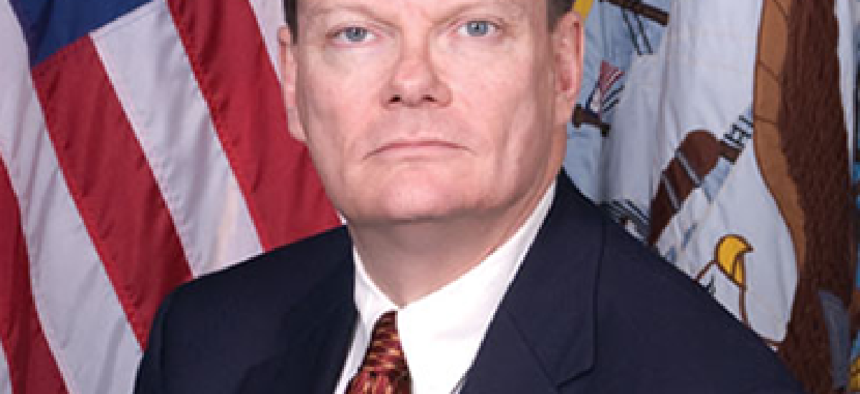JIE comes into focus under Halvorsen

After three months on the job, acting DOD CIO Terry Halvorsen is putting his stamp on leading Defense IT projects.

Acting Pentagon CIO Terry Halvorsen called work on the Joint Information Environment "probably the largest modernization effort we have undertaken inside DoD."
At a security conference in June, acting Defense Department CIO Terry Halvorsen said that his office, "couldn't define what JIE is by tomorrow." Hitting his stride after three months on the job, Halvorsen has a working definition of the Joint Information Environment -- the military's plan for a new, interconnected network structure -- and what it takes to put plans in motion.
The JIE is a "concept, not a program" with a clear-cut end state, Halvorsen said in a luncheon address at the 2014 Federal Forum in Washington D.C. on Aug. 13.
Critically, the JIE calls for an environment of networks, not a single network. The emphasis will be on IP networks, but some systems will require parallel redundant networks so that critical components, such as certain weapons systems, aren't at risk.
"We want them to work 100 percent of the time. It's embarrassing when they don't," Halvorsen said.
The work around the JIE is, "probably the largest modernization effort we have undertaken inside DoD," Halvorsen said. The individual military services are at different stages in their own modernization processes, and are working off of separate contract vehicles, creating additional complexity when it comes to planning to divide the JIE plan into discrete plans and tasks.
This work all has to be done in an environment of diminishing budgets. Fiscal years 2016 and 2017 "are going to be extremely challenging years for the government, including DoD," he said.
Halvorsen emphasized the need to replace outdated switches and routers, and move to a more agile network that can be managed by software.
"We have to embrace the software-defined mission of where we have to go with the networks -- that includes all the infrastructure," he said. Software-defined networks also allow for better network defense. "I think that's probably the biggest gain here, when we're done. It will let us respond to the changing threat environment faster."
The effort will also save money, but Halvorsen said the existing cost projections have been to high, and that he his asking his staff to bring costs down.
Halvorsen also outlined how vendors can play in the JIE space.
Halvorsen announced that the Pentagon would be issuing guidance to software developers to streamline the code on bandwidth-hungry applications, so that they can operate in challenging environments. He also gave notice about a series of cloud pilots, using level three and level four (high-impact but unclassified data). The key is identifying areas where DOD will accept some level of risk. The plan, Halvorsen said, is to focus cloud efforts around business systems and unclassified information.
"We're probably not going to put a lot of level 3 data into what I would call a standard open cloud," Halvorsen said. But he does envision private-cloud, government-only cloud, and other opportunities that could include having a commercial vendor operate a government-built cloud on a contract basis.
The effort is gathering steam, with reportable progress expected in about 20 days. If Halvorsen's team gets five pilots out the door by Sept. 1, they are in line for a steak dinner, courtesy of their boss. "We decided it would not be at Golden Corral," Halvorsen said.
NEXT STORY: Sylvia Burns promoted to Interior CIO






